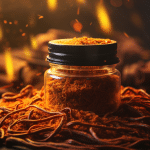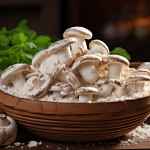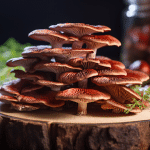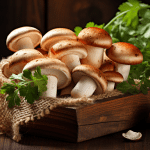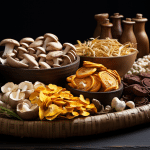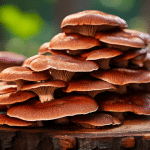As we alluded to throughout this guide, different types of substrates are better for different species of mushrooms. If you are wondering, “What is the best mushroom substrate?”. Unfortunately, we don’t have one all-encompassing answer that fits all situations. If it were so simple, then every mushroom farmer would simply be using a single, perfect substrate!
Some mushroom species, such as oyster mushrooms, are highly aggressive and will colonize on a large range of materials. Others favor substrates that are based on wood. Some fungal species, such as truffles, even prefer to grow in the roots of live trees, making them notoriously hard to cultivate in a commercial environment. But let’s dig into which substrates are best for which type of mushrooms.
Choosing Your Substrate
How much time and money would you like to invest in growing mushrooms. If you want to keep the inputs of both time and money down, then focus on pasteurized substrates rather than supplements, and select species that will grow well on these substrates. This is the approach that we think is most hands-on, and scales really well. If you are looking to grow a large variety of edible mushrooms at a commercial scale, and are OK investing more time and money, then focus on supplement materials, and having a way to vaporize and sterilize your materials.
Learn more: What to do with spent mushroom substrate
This will allow you to branch out to a wider variety of mushrooms. What substrates are available for you? logically, you would want to pick the substrate which is available locally. For example, if straw isn’t plentiful where you live, you could try coco coir.
Low Tech Mushroom Substrate
If you really want to take a less technical path with your mushroom growing, some great substrate options include straw, straw pellets, sawdust pellets, sugarcane mulch, and coffee grounds. We explore some of those below in more detail.
Straw Substrate
Straw is not a high-nutrient food, and therefore is not ideal for every variety of mushrooms. However, it can be pretty efficient at growing species of oyster mushrooms. Other species of mushrooms which can be grown in straw include Amanita species, Capsicum (also known as Garden Giants), Schist-Men, and Enoki.
Using Logs or Sawdust
There are many varieties of edible and medicinal mushrooms that are enjoyed by the Wood-loving people. These include Shiitake, Maitake, Turkey Tail, Lions Mane, and Reishi. Some types of oyster mushrooms also will grow very well in the woods. Specifically, the King Oyster Mushroom, which prefers wood to straw as its substrate. Most mushrooms that grow well in logs will also grow in hardwood wood chips, or vice versa, as they are both wood-based substrates.
Remember, if using logs, you will want to keep them pretty clean-cut. Logs that are already dead or rotting can be already a home for wild fungi and mold. Logs do not have to be sterilized prior to use.
But be aware that because they are more naturally-occurring material for growing mushrooms, they can harbor other species of fungi that can create toxic mushrooms. But be sure you know how to identify the species of mushrooms that you’re growing, and make sure other types aren’t mixed in by accident.
Learn more: What are the most popular types of mushrooms to grow
Sawdust Substrate
If you want to grow a wider variety of mushrooms in sterilized substrates, try an enhanced wood chip mixture with 60% hardwood sawdust, 20% wood chips, 18% grits, and 2% gypsum.
Masters Mix
Masters Mix, developed by Earth Angel Mushrooms, is another easy substrate option, made up of 50% hardwood pellets and 50% soybean pellets. It tends to produce really nice harvests, but you will have to sterilize it. If you are in the US, you can purchase bags of this that have been pre-made at Mushroom Media Online.
Manure
You may be thinking manure is the perfect growing medium for mushrooms. However, most species of edible mushrooms actually do not like this. The major exceptions are buttons, crimini, and portobello mushrooms. These are all effectively the same species of mushrooms in various stages of their lives.
Coffee Grounds as a Substrate
We recommend growing Oyster Mushrooms on Coffee grounds only.
This is a tried-and-tested combo.
A couple other species of mushrooms, such as Shiitake, can also be grown in the Coffee grounds, but they might not yield the same amount of yields compared to growing them in the hardwoods.
Mixes
Some materials, such as vermiculite, do not provide any nutrition value themselves. However, they can be mixed with other materials such as coco coir or grains in order to give better water holding capacity or some other qualities.
Experimenting with different substrate mixes is something that you may want to try out after growing mushrooms for some time. However, when you are just learning to grow mushrooms on your own, you will want to stick to one type of substrate for the first time until you are able to get consistent yields.
Supplementing Your Substrate
If you are thinking about growing mushrooms commercially, you might need to add supplements to the substrate in order to improve mushroom production. The most common materials for supplements are bran, or a seed derivative. Or, you may be able to obtain them as high-protein animal feed pellets. The latter is preferable because it is already pasteurized.
You will have to experiment with how much of your additions you want to add, and how much also depends on if the materials you are adding are sterilized.
We suggest starting with 5 percent and working up.
Updated 10/3/2022








